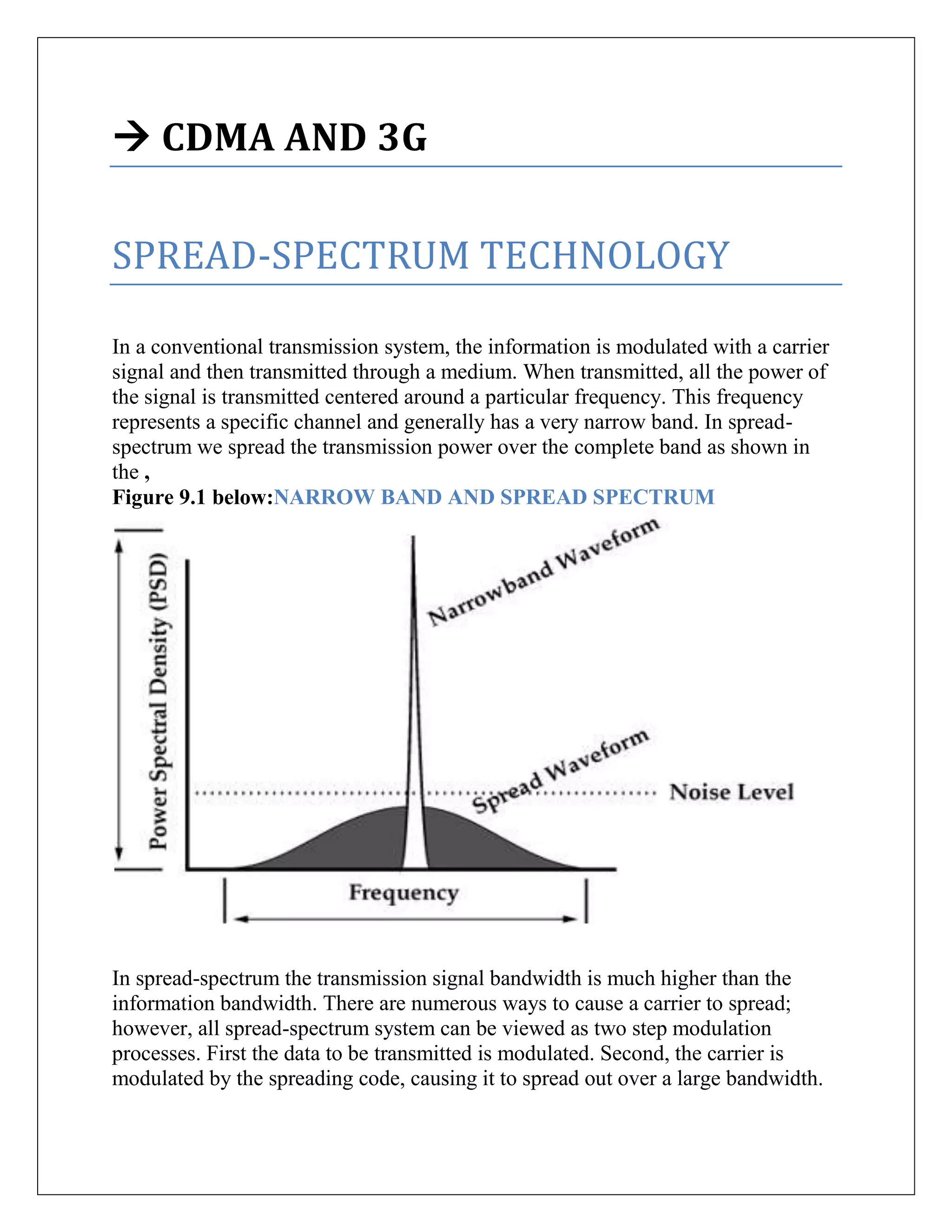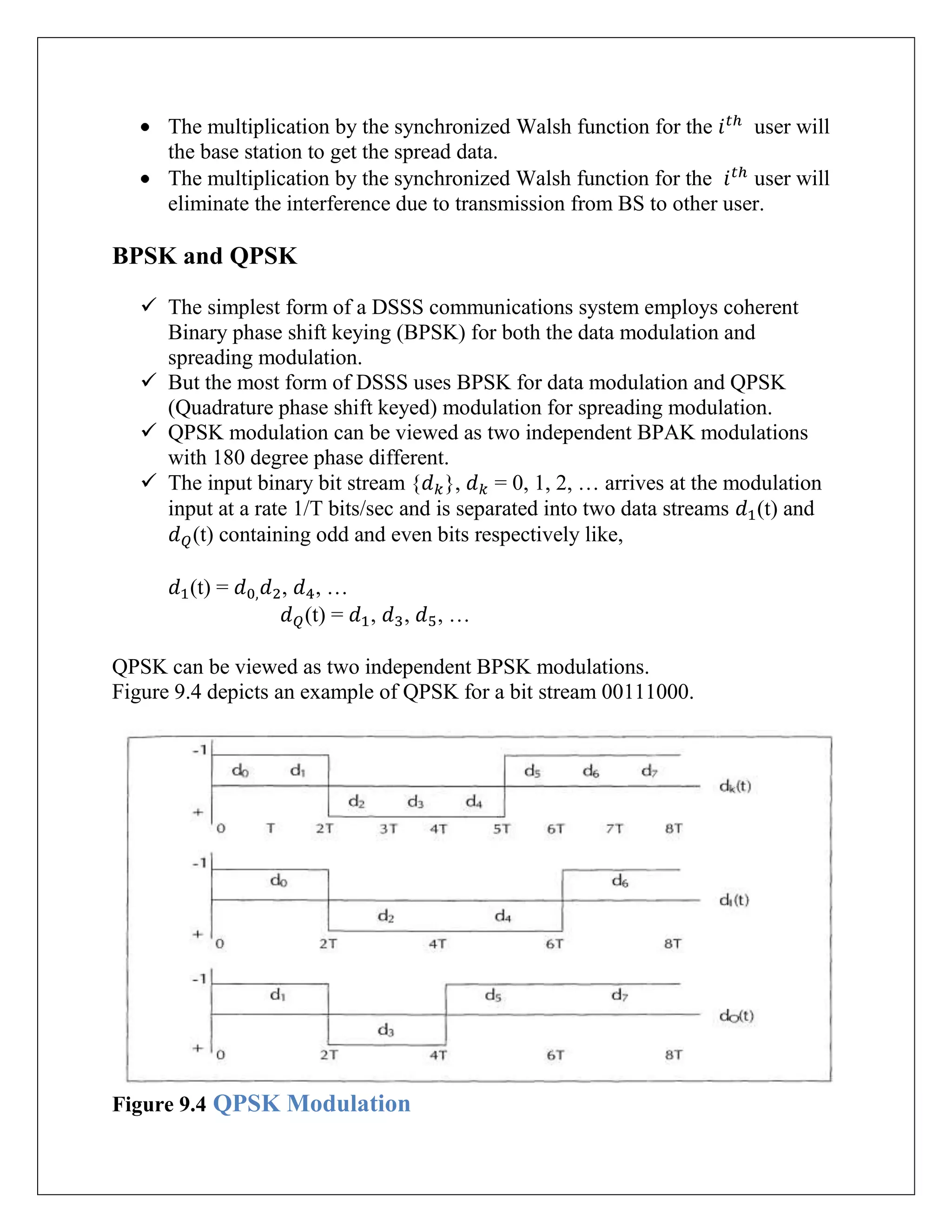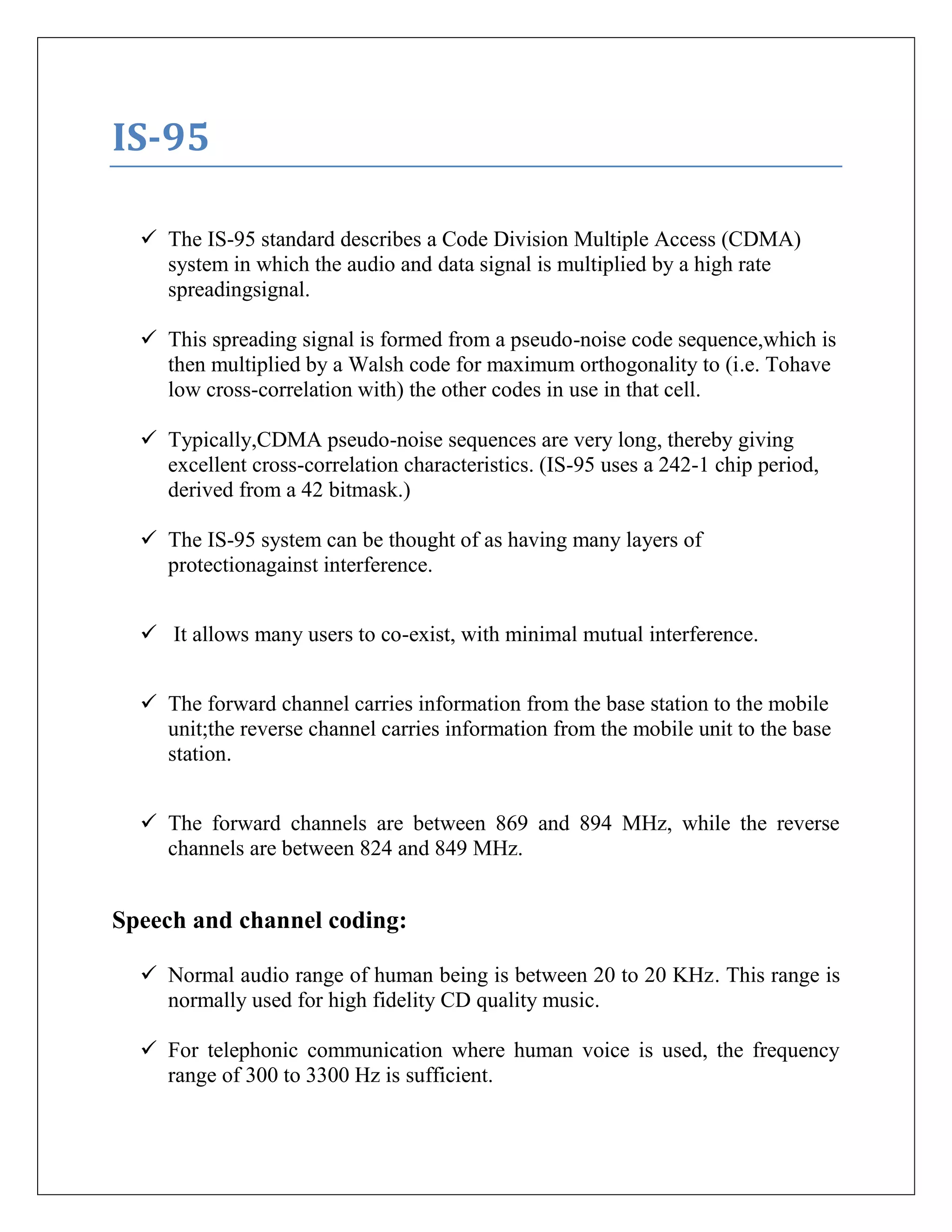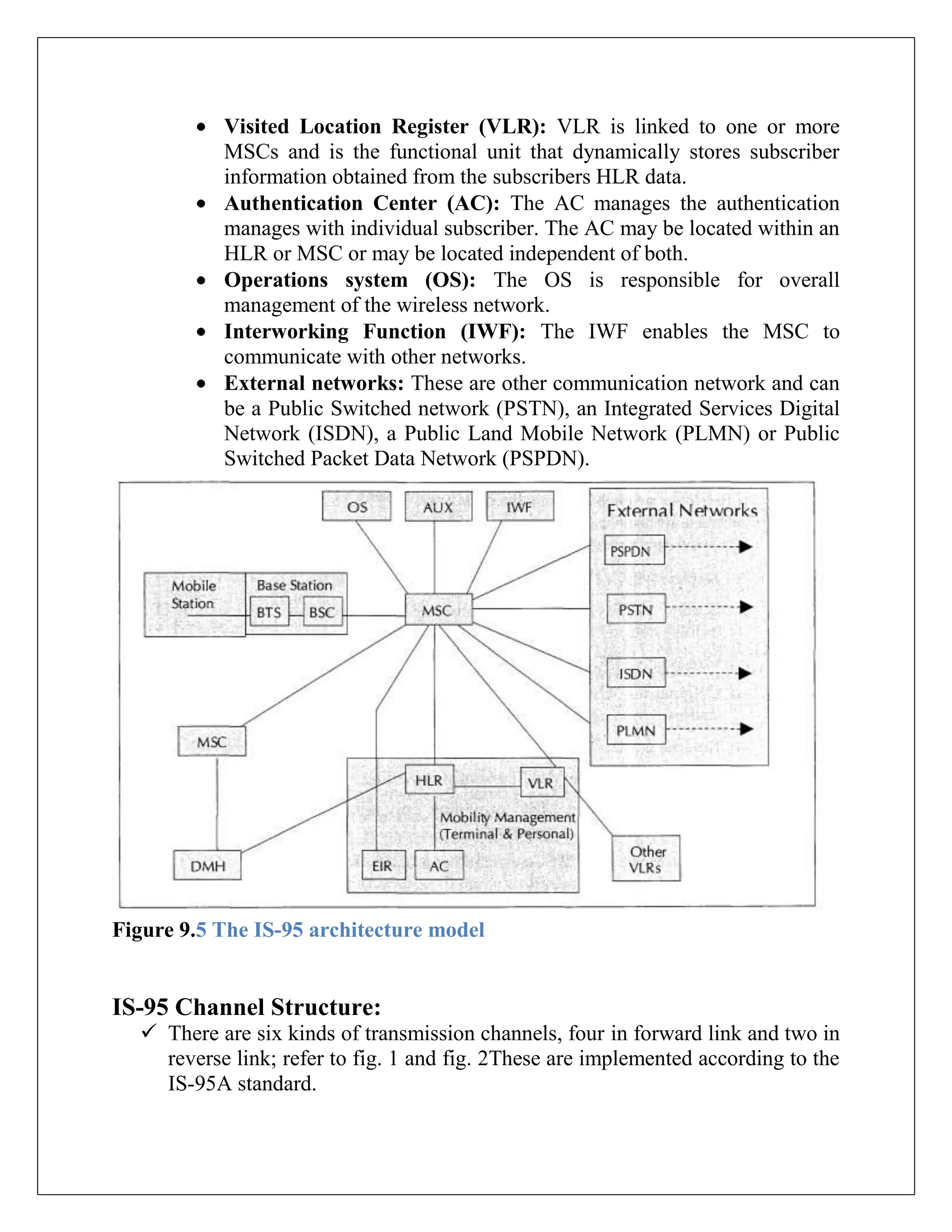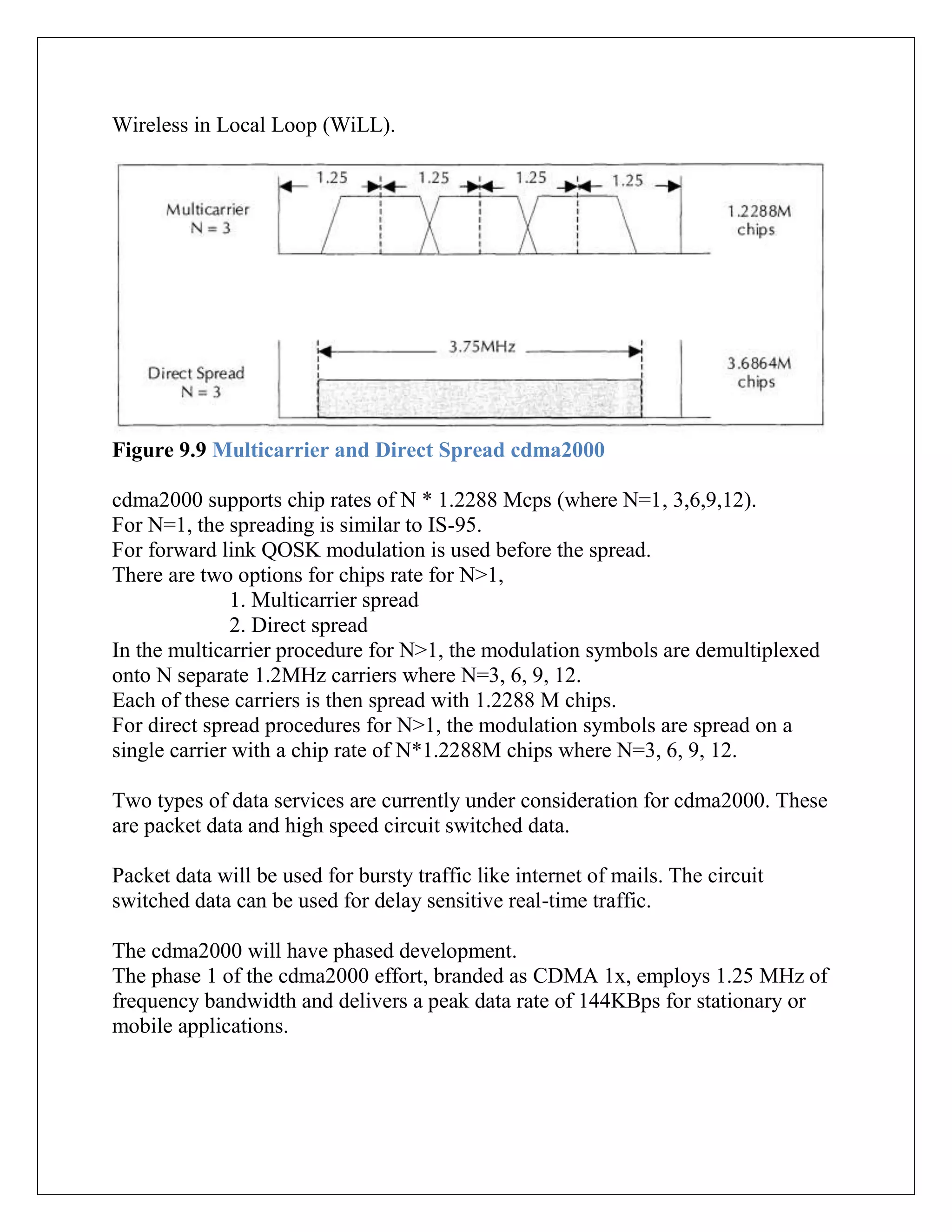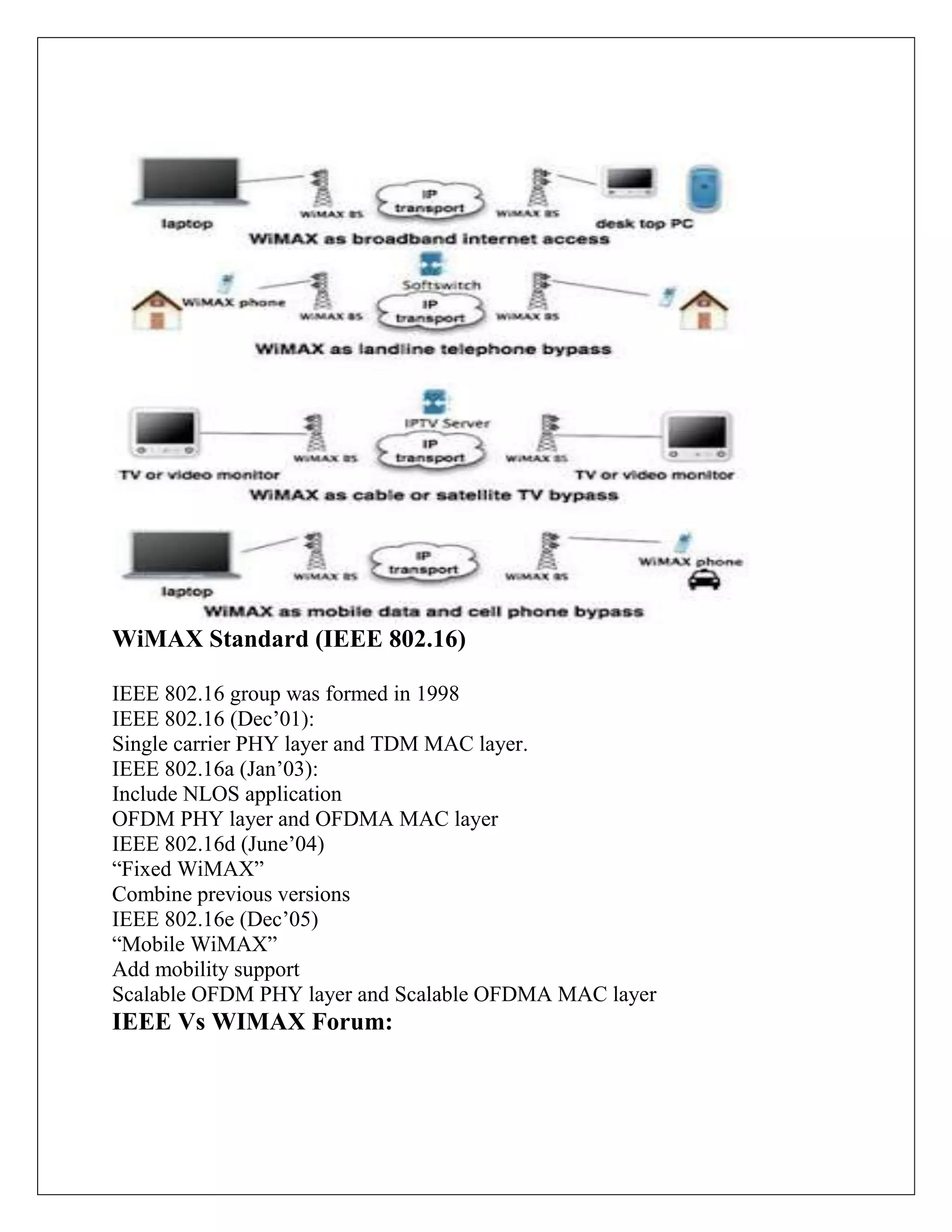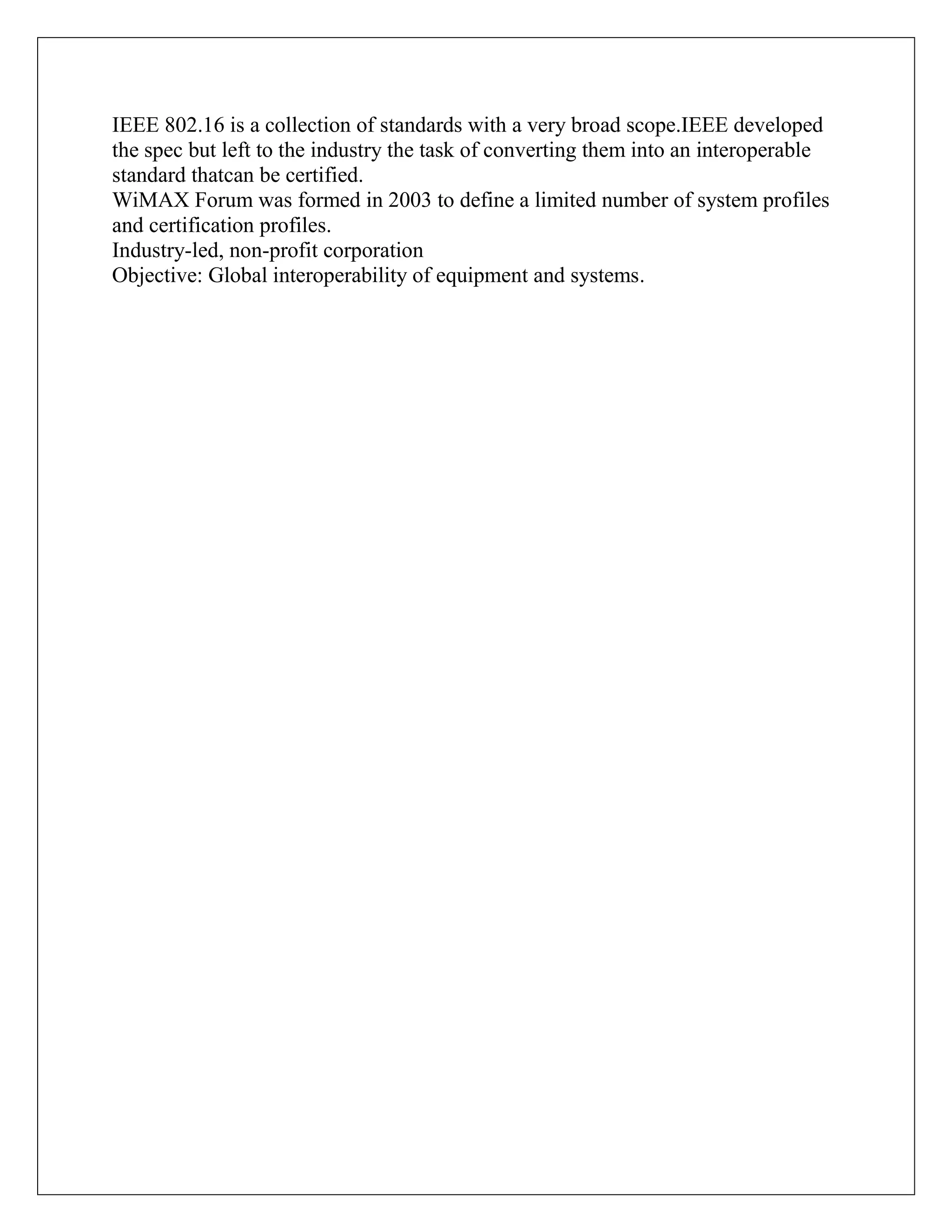The document discusses CDMA and 3G spread spectrum technology. It describes how CDMA uses direct sequence spread spectrum to allow multiple users to access the same frequency band simultaneously. It explains the key elements of spread spectrum communication including using a chip rate that is faster than the data rate, synchronization at the receiver, and using pseudo-random codes. It provides details on IS-95 CDMA including channel structures, call processing, and authentication.
